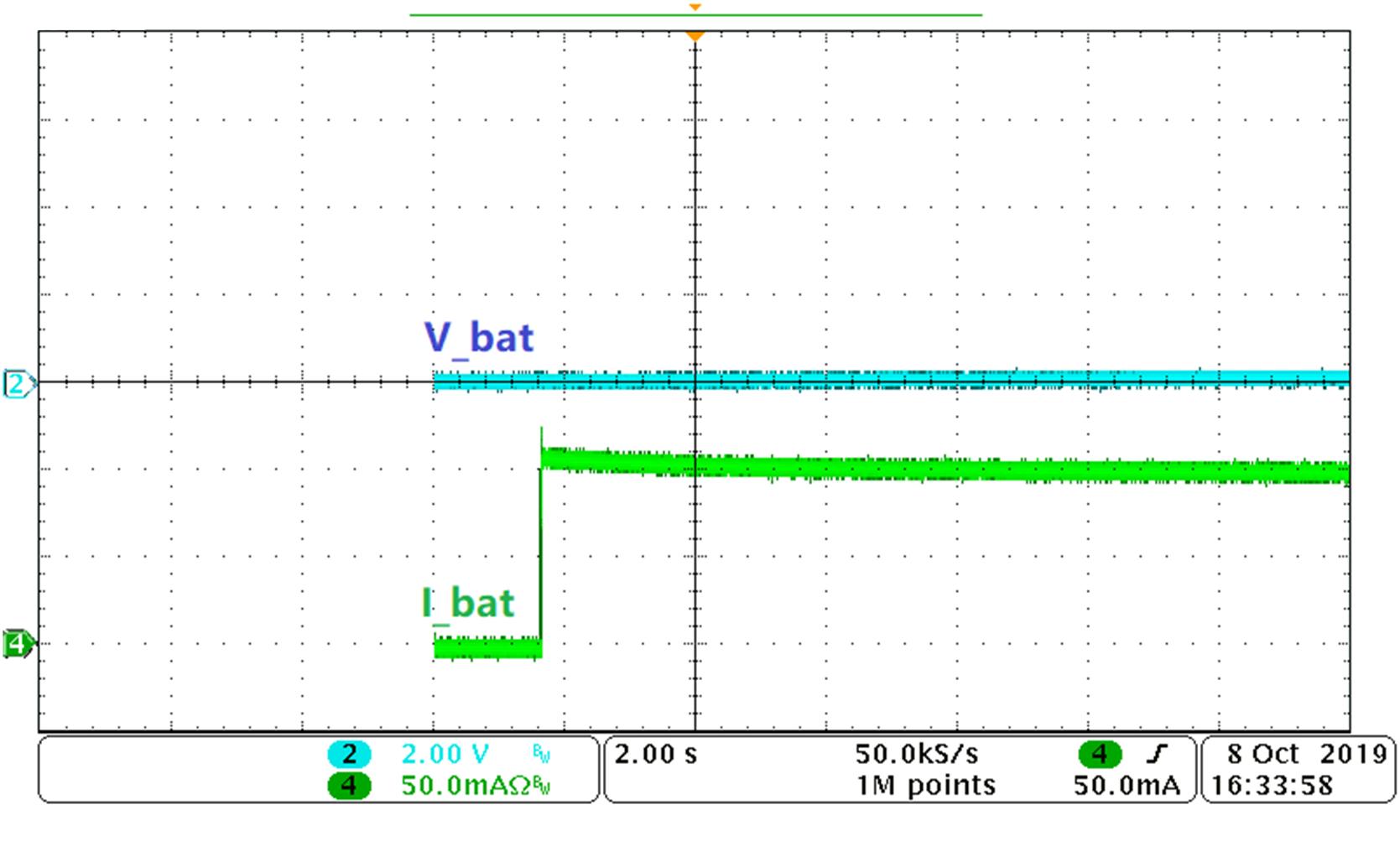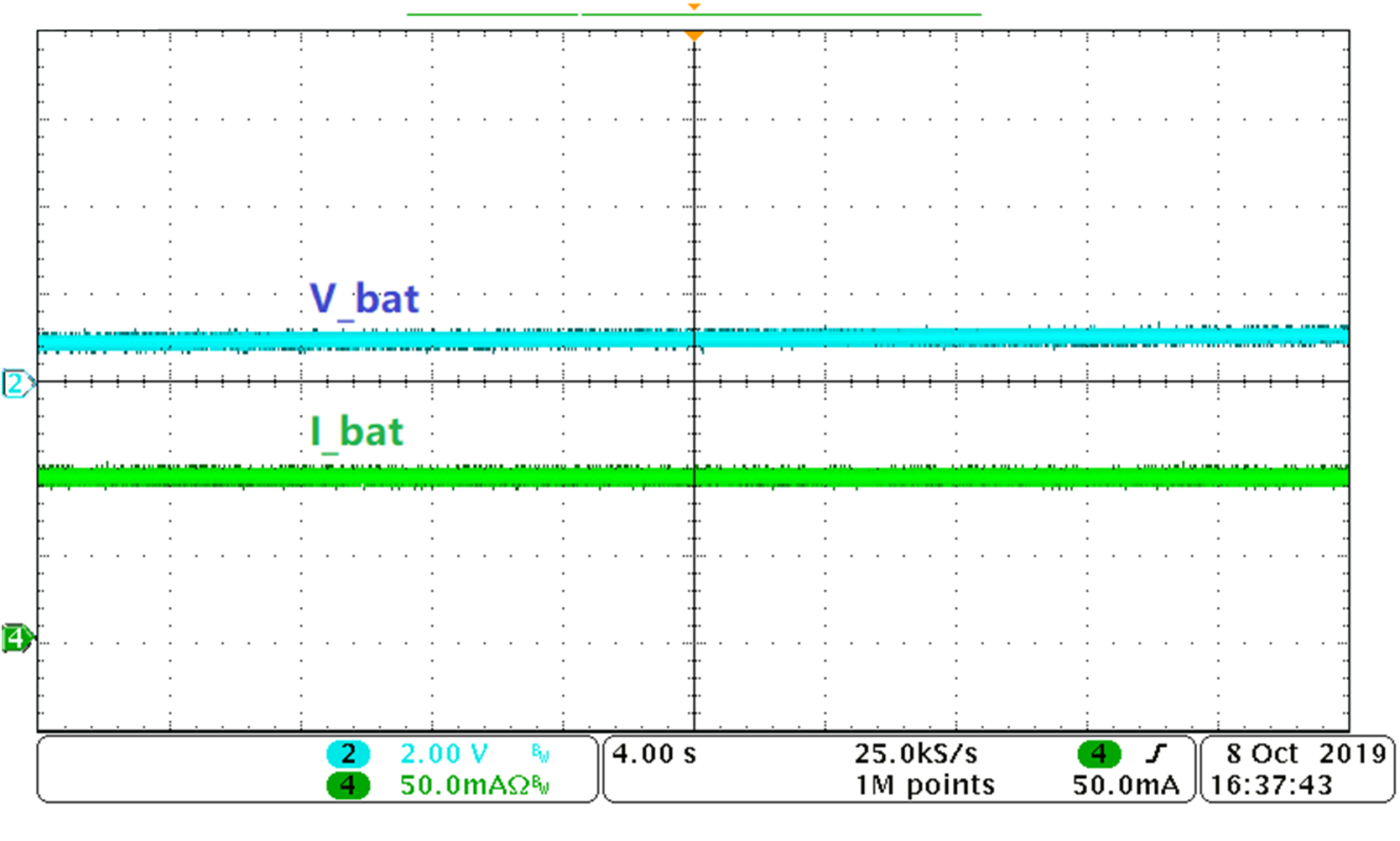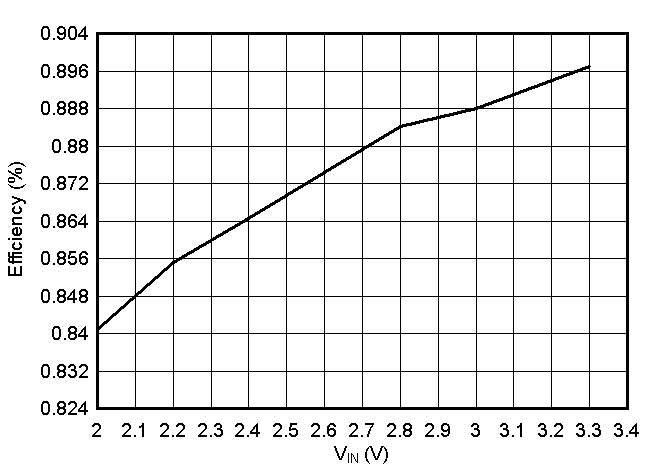TIDUET0A November 2019 – July 2020
3.2.2 Test Results
Figure 3-1 and Figure 3-2 show the charge voltage and the charge current across a 2000mAh LiFePO4 capacitor. The initial charge current is well limited. The charge current is 100mA.
 Figure 3-1 Charge Voltage and Charge Current-1
Figure 3-1 Charge Voltage and Charge Current-1 Figure 3-2 Charge Voltage and Charge Current-2
Figure 3-2 Charge Voltage and Charge Current-2Figure 3-3 shows the conversion efficiency of the TPS61088-Q1 boost converter under 1.5A load current. The conversion efficiency is quite high even the backup battery voltage drops to 2 V.
 Figure 3-3 TPS61088-Q1 Efficiency curve
Figure 3-3 TPS61088-Q1 Efficiency curve